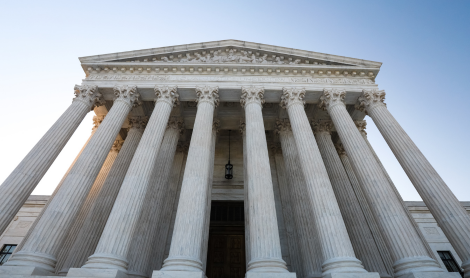Chicago — Charter school performance varies considerably across the nation, as indicated by today’s National Assessment of Educational Progress (NAEP) data, but the independent public schools outperform traditional schools when political and district leaders have made chartering a conscious reform policy, according to the National Association of Charter School Authorizers (NACSA).
“This NCES report of NAEP data is just another salvo in the data wars that have been raging over charters for 10 years. Next week, another cut of the data could say the charters are doing better than traditional schools. Yet across America governors, mayors and leading school superintendents continue to embrace the use of charters and new school strategies, and indeed these leaders help ensure the strategy works, as their support has proven pivotal,” said Greg Richmond, NACSA’s president.
“In city after city, we find charters often are leading-edge schools and nearly always doing better than their district counterparts when school district leadership is in support of the charters,” said Richmond. “We see evidence that better results come when districts embrace and support these schools.”
Political support also helps these innovative schools succeed. “Nearly all the inventive school CEOs, state and city superintendents, like Joel Klein in New York, Arne Duncan in Chicago, Commissioner David Driscoll in Massachusetts, Bill Andrekopoulos in Milwaukee, and Paul Vallas in Philadelphia, work hard to get mayoral and legislative support for a growing set of charter schools and, by doing so, they gain these young schools considerable resources and community support,” said Richmond. “Some superintendents advance and promote charters deliberately to showcase what is possible to their traditional schools in order to spur deeper change and higher productivity.”
The evidence is strong that intentionality by districts and/or municipalities and states leads to strong performance:
• In Indianapolis, Democratic Mayor Bart Peterson, the only mayor in the nation with the power to charter, has 17 charter schools running and in 2005 his schools significantly outperformed district schools. From 2003 to 2005, the cohort of charter students that moved from 3rd to 5th grade gained 30 percentage points, versus one point in non-charters.
• Chicago’s mayor Richard M. Daley launched his Renaissance 2010 initiative in 2004 to open 100 new charter and charter-like schools, and has engaged the broader community in chartering – universities, businesses and neighborhood groups. He had good reason to do so. Between 2002 and 2005, seven of nine district-authorized charter elementary schools improved faster than Chicago Public Schools as a whole on the state’s tests, and all the high school charters had higher graduation rates and outperformed the schools there students would have attended in 2004
• Mayor Michael Bloomberg and Superintendent Joel Klein in New York are enthusiastic charter and small school supporters. In a study released last month, 11 of 16 charters outscored students in nearby public schools on the state’s fourth grade English and math exams in 2005.
• The State University of New York (SUNY) has granted a number of charters in Buffalo, NY where charter students comprise 13 percent of public school enrollment, and the schools are outperforming the district schools decisively. The city’s new superintendent, James Williams, recently spoke to local foundation leaders and said, “I am not afraid of charter schools. I want to learn from them.” He has launched a reform effort for Buffalo making use of many charter innovations and applying them to district schools.
• In Washington, DC, where 25% of the students are enrolled in public charters, the independent chartering board has authorized 34 charters with the strong support of DC’s mayor and Members of Congress of both parties. The DC Public Charter School Board provides careful oversight of brand new charters and those where problems have arisen and that accountability has paid off with seven charter high schools with a cumulative college acceptance rate of 92%.
• The Louisiana Department of Education and its superintendent, Cecil Picard, have chosen charters as the predominant model for rebuilding education in the city of New Orleans after the devastating storm.
Districts and political leaders that welcome charters tend to select school organizations well, weeding out inferior applicant groups, and then overseeing the schools they have chosen attentively. One key to the success of these new schools is the little-understood “authorizing” function. Authorizing agencies are now widely seen as the cornerstone of quality in the charter movement, setting the terms of performance agreements and the ongoing oversight of operations and academic performance.
“The maturing charter movement has begun to understand the need for political and community support for these fresh start schools. They have enough difficulties to overcome, not unlike a small business start-up, and they are desperate for resources, funding and talent,” said Richmond. “Charters work when they have support. On the flip side, when districts or charter opponents attack these schools by withholding funds, denying facilities, and purposely over-regulating the schools, they generally do less well.”
Early on, in the booming 1990s, the market model was predominant. The charter movement suggested that school districts would be forced to change to respond to the competition successful charters would present for students and resources. However, intransigent districts have proven adept in protecting the status quo even with charters in the mix.
Strong authorizing is being recognized by researchers and districts as the key to having a strong set of charters. Districts and states that want charters to succeed provide strong staffs and good processes to oversee and manage schools. The Thomas H. Fordham Foundation points out in its report “Trends in Charter School Authorizing”: “Over the past decade or so, we and others have often claimed that charter schools are the most promising innovations in American education. We were wrong. Charter school authorizing and the act of chartering schools are the most promising contemporary educational innovation.” University of Washington researcher Paul Hill stated recently in the 2005 report “Hopes, Fears and Reality”: “Good authorizers are essential to charter school success and so are good providers. If either fails, the public loses confidence.”
View Press Release PDF


